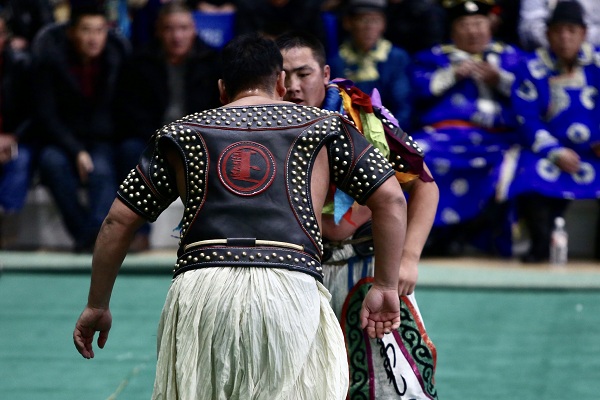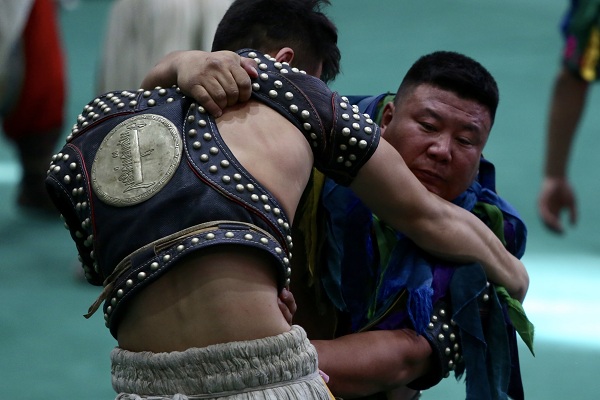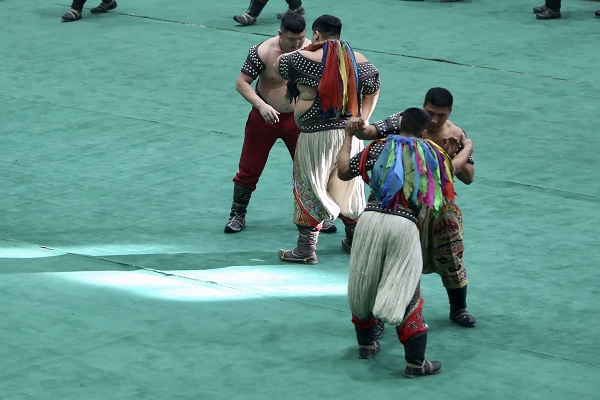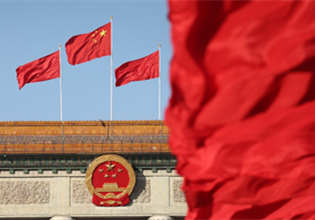Mongolian wrestling tournament marks Nadam festival
Hundreds of Bohk athletes gathered to fight at the Inner Mongolia International Mongolian Wrestling Invitational held in Xi Ujimqin Banner, Xilin Gol League, North China's Inner Mongolia autonomous region on Jan 8.

Two men combat each other during the Inner Mongolia International Mongolian Wrestling Invitational held in Xi Ujimqin Banner, Xilin Gol League, North China's Inner Mongolia autonomous region on Jan 8. [Photo provided to chinadaily.com.cn]
As part of the 14th Ice and Snow Nadam alongside the 7th Art Festival of Mongolian Winter Costumes, the wrestling contest attracted 256 Bohk athletes from China, Russia, Mongolia and South Korea to compete. Eventually, a Bohker from the China's Mongolian ethnic group won the championship after a tough competition lasting 12 hours.
Bohk, also known as Mongolian wrestling, has a history of more than 2,000 years. It is a rugged hand-to-hand sport, relying more on raw physical power than a wide variety of techniques. The sport is loved by the Mongolian people for its unique combination of athleticism and aesthetics.
Bohk is one of Mongolia's age-old "Three Manly Skills" along with horsemanship and archery. The basic premise behind Bohk is to force an opponent to touch any part of their body other than the feet to the ground, placing them in a position of inferiority. This kind of training served the Mongol hordes well in their conquests, earning them a reputation as fierce soldiers on foot and on horseback. It was this type of military might that allowed Genghis Khan to conquer the Song Dynasty in 1127. Genghis Khan considered wrestling to be an important way to keep his army in good physical and combat shape.
The Mongolian way of wrestling is different from both Chinese wrestling and sumo wrestling in Japan. It is distinguished by its rules, methods, uniforms and fields. There is neither a separation of grade (no age or weight distinction) nor a fixed number –– as long as the match has even numbers of participants such as two, four, six, or even one hundred. All the wrestlers are matched by arrangement or by drawing straws. The game is single-elimination, which means if a player loses once, he's out. The loser is not allowed to compete again.
As soon as the judge gives an order to start, the opponents first shake hands to show respect to each other, and then begin wrestling. There is no time limit, and the opponents can use any method or moves they want, such as pulling, kicking, tripping, pushing, holding or lifting. However, holding your opponent's legs, arbitrarily kicking, or pulling down his trousers is not allowed. Whoever touches the ground with any part of his body above the knees loses.

Two athletes prepare to fight each other during the Inner Mongolia International Mongolian Wrestling Innovational held in Xi Ujimqin Banner, Xilin Gol League, North China's Inner Mongolia autonomous region on Jan 8. [Photo provided to chinadaily.com.cn]

Two Bohkers combat each other during the Inner Mongolia International Mongolian Wrestling Invitational held in Xi Ujimqin Banner, Xilin Gol League, North China's Inner Mongolia autonomous region on Jan 8. [Photo provided to chinadaily.com.cn]

Athletes combat each other during the Inner Mongolia International Mongolian Wrestling Invitational held in Xi Ujimqin Banner, Xilin Gol League, North China's Inner Mongolia autonomous region on Jan 8. [Photo provided to chinadaily.com.cn]



 Print
Print Mail
Mail





